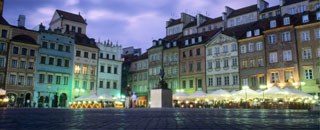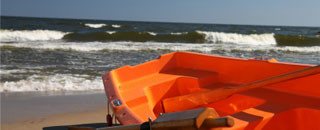- Do I need a visa to visit Poland?
Poland is part of the Schengen Area, so visitors from Schengen Zone countries do not need a visa. Tourists from non-Schengen countries, like the US, Canada, Australia, and Japan, can stay up to 90 days without a visa. Others may require a visa, so it’s best to check specific requirements. This is one of the most asked FAQ about Poland. - What is the best time of year to visit Poland?
Poland has a temperate climate with four seasons. The most popular times are late spring (May to June) and early autumn (September to October), as the weather is mild and pleasant. Winter is ideal for skiing in the mountains, and summer (July to August) is great for outdoor activities, although it can get crowded. - Is Poland safe for tourists?
Yes, Poland is generally considered a safe country for tourists. Like any other destination, tourists should take basic precautions, such as watching their belongings in crowded places and avoiding sketchy areas at night. The crime rate is relatively low, and tourist-friendly cities like Kraków and Warsaw are well-policed. - What currency is used in Poland, and can I use Euros?
Poland uses the Polish złoty (PLN) as its currency. While some businesses, especially in tourist areas, may accept euros, it’s not common, and you’ll often get a poor exchange rate. It’s best to use złoty for most transactions. ATMs and exchange offices are widely available. - Do people in Poland speak English?
Many people, especially in larger cities and tourist destinations like Kraków, Warsaw, and Gdańsk, speak English, particularly younger generations and those in the tourism sector. However, in rural areas, English might not be as commonly spoken, so it’s helpful to learn a few basic Polish phrases. - How do I get around in Poland?
Poland has an extensive and affordable public transportation system, including buses, trams, and trains. The train network is efficient, especially between major cities like Warsaw, Kraków, and Wrocław. Domestic flights are also available. For city transport, taxis and ride-sharing apps like Uber are commonly used. Renting a car is a good option for exploring the countryside. - What are some must-see places in Poland? (This is the second most often asked FAQ about Poland)
Popular tourist destinations include:
Kraków and Auschwitz-Birkenau Memorial.
Warsaw for its history and culture.
The Wieliczka Salt Mine.
Gdańsk for its beautiful old town and Baltic coastline.
Zakopane and the Tatra Mountains for hiking and skiing.
The Białowieża Forest for wildlife and nature lovers. - What is Polish cuisine like?
Polish cuisine is hearty and flavorful, often featuring ingredients like potatoes, cabbage, and meat. Traditional dishes include pierogi (dumplings), żurek (sour rye soup), bigos (hunter’s stew), and kotlet schabowy (breaded pork cutlet). Vegetarians and vegans can find options in major cities, though rural areas might be more challenging. - Can I use my mobile phone in Poland?
Yes, EU citizens can use their phones with no extra roaming charges. Non-EU visitors should check with their providers about roaming fees or consider purchasing a local SIM card, which is widely available and inexpensive. - What are tipping customs in Poland?
Tipping is common but not mandatory. In restaurants, a 10-15% tip is appreciated if the service is good. In taxis, rounding up to the nearest whole number or leaving a small tip is customary. - What electrical plugs are used in Poland?
Poland uses type C and E plugs, with a standard voltage of 230V and a frequency of 50Hz. Visitors from countries using different plug types may need an adapter and possibly a voltage converter. - Is Poland expensive?
Compared to Western Europe, Poland is relatively affordable. Prices in big cities and tourist areas may be higher, but overall, accommodations, food, and transport are reasonably priced. You can find budget-friendly options as well as high-end experiences. - Can I drink tap water in Poland?
Yes, tap water in Poland is safe to drink in most areas, particularly in major cities. However, many locals prefer bottled water, which is readily available. - Are there any cultural customs I should be aware of?
Poles value politeness and may greet strangers with a handshake. Removing shoes when entering someone’s home is customary. It’s also important to be respectful when visiting places of historical significance, such as Auschwitz, and when entering churches. - Can I visit World War II sites, including concentration camps?
Poland is home to many important historical sites, and visitors often inquire about visiting places like Auschwitz-Birkenau, Warsaw’s Uprising Museum, and Gdańsk’s WWII Museum. Some of them may be visited during one of our tours – https://greetingsfrompoland.com/tour/tracing-world-war-ii-poland/ - Are there ATMs in Poland
Yes, in Poland, ATMs (often called cash dispensers) are widely available in cities, towns and even smaller villages. You can easily withdraw cash in Polish zlotys (PLN) and even some euros, using both local and international bank cards. Major international networks such as Visa, MasterCard and others are usually supported. Most ATMs also offer instructions in English, making them friendly to foreign tourists. Also, in 99% of restaurants, bars, hotels, attractions you can pay by credit card, only checks are generally not supported. - What should I pack? (This is the hardest to answer FAQ about Poland)
Pack according to the season. In winter, be prepared for low temperatures and snow, while summer can be warm. Comfortable shoes are a must, as many attractions require walking. Don’t forget adapters for European outlets (Poland uses 230V plugs). Also check the validity of your passport and whether you have valid travel insurance. - What currency is used, and how can I pay?
Poland uses the Polish złoty (PLN). Credit and debit cards are widely accepted, especially in cities, but it’s smart to carry some cash for smaller businesses or rural areas. ATMs are plentiful. As a last resort, you can always ask to pay in USD or Euro, but the conversion rate will not always be favorable to you. - Do you have Wi-Fi here?
Despite Poland being a modern country with widespread internet access, this question occasionally pops up.
More FAQ about Poland coming soon ! Now you may review our offers here.
FAQ about Poland
See also our other trips & tours

TOURS TO POLAND 2025 and 2026

THEMATIC TRIP TO POLAND


